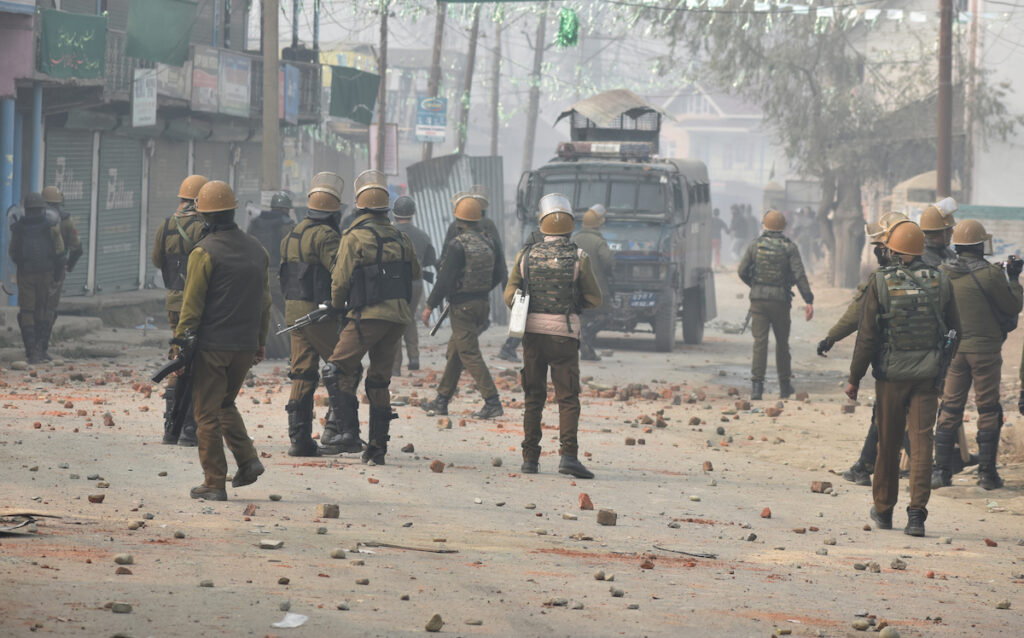Shocking Attack in Popular Tourist Area
In a devastating escalation of violence in Indian-controlled Kashmir, at least 20 tourists were killed and over 30 others injured after a group of gunmen opened fire near a popular meadow close to the town of Pahalgam. According to police, four armed men launched the ambush on Tuesday in the Baisaran meadow area, a spot widely frequented by domestic tourists for its scenic mountain views and pine forests.
Authorities retrieved at least 20 bodies from the site, while emergency services rushed the wounded to nearby hospitals. Many of the injured remain in critical condition. The attackers, described by local officials as militants, reportedly targeted the visitors at close range. The gunmen quickly fled, prompting a large-scale security operation in the surrounding forested terrain.
The Baisaran meadow, about five kilometers from Pahalgam, is considered one of the most serene parts of the Kashmir Valley and is usually bustling with tourists during peak seasons. The assault has prompted widespread fear and condemnation, marking one of the most severe attacks on civilians in the region in years.
Security Response and Political Reaction
Police have cordoned off the area and launched a manhunt for the perpetrators. Authorities are describing the event as a “terrorist attack” carried out by militants opposing Indian rule in the region. Senior officials have stated this represents a significant shift in targeting strategy, as tourists have generally been spared from direct attacks despite ongoing insurgent activity.
India’s Home Minister Amit Shah announced an emergency visit to the region, stating that those behind the assault would face the “harshest consequences.” Prime Minister Narendra Modi, currently on an overseas trip, has been briefed on the developments and is expected to issue a formal statement soon.
Meanwhile, prominent political and religious figures in Kashmir, including Mirwaiz Umar Farooq, have publicly denounced the violence. Farooq emphasized that the attack contradicts the region’s tradition of welcoming guests with hospitality and peace, urging an end to such acts of brutality.
Implications for Regional Stability
The attack arrives at a time when Indian-administered Kashmir has been experiencing a delicate phase of stability, particularly in the central Valley areas. However, the killing of civilians, especially non-residents, risks undermining recent efforts to restore normalcy in the troubled territory.
Since the revocation of Jammu and Kashmir’s semi-autonomous status in 2019, New Delhi has significantly expanded its counterinsurgency operations. The move has coincided with increased surveillance, military presence, and limitations on public dissent. While violence had appeared to subside in some urban regions, the pattern of attacks has shifted to rural districts, especially in Jammu’s Rajouri and Poonch areas.
Tuesday’s deadly ambush could further impact local tourism, which had seen a revival in recent years. Tourism is a vital part of the regional economy, drawing millions annually. This resurgence had been seen as a sign of improving stability, but such incidents now raise concerns over future visitor safety.
Kashmir’s Lingering Conflict
Kashmir remains one of the world’s longest-running and most complex territorial conflicts. Both India and Pakistan claim the region in full but control different portions. Since 1989, an armed insurgency has been ongoing in the Indian-controlled region, where many Muslim residents support either unification with Pakistan or complete independence.
The Indian government maintains that the insurgency is a result of cross-border terrorism sponsored by Pakistan. Islamabad, however, denies these claims and describes the situation as a struggle for self-determination. The protracted conflict has cost tens of thousands of lives, including civilians, militants, and security personnel.
Though international attention on the conflict has waned in recent years, the brutal targeting of tourists has rekindled fears about safety and instability in the region. The latest violence threatens to undo years of cautious optimism and raises fresh questions about the prospects for long-term peace in the valley.
Outlook Amid Ongoing Tensions
As the region reels from the shock of this tragedy, the focus will turn to security enhancements, diplomatic posturing, and the resilience of local communities. Whether this incident becomes an isolated aberration or a prelude to renewed unrest will largely depend on the effectiveness of the investigation, cross-border dynamics, and the political will to safeguard civilians—both local and visiting—in a land that continues to balance beauty and volatility.


